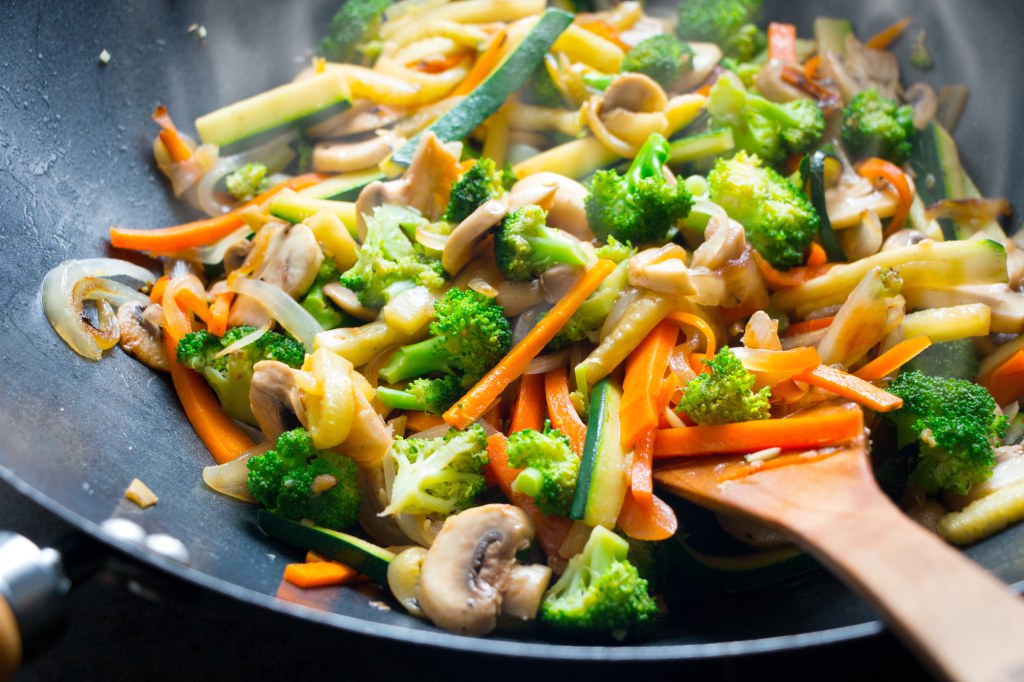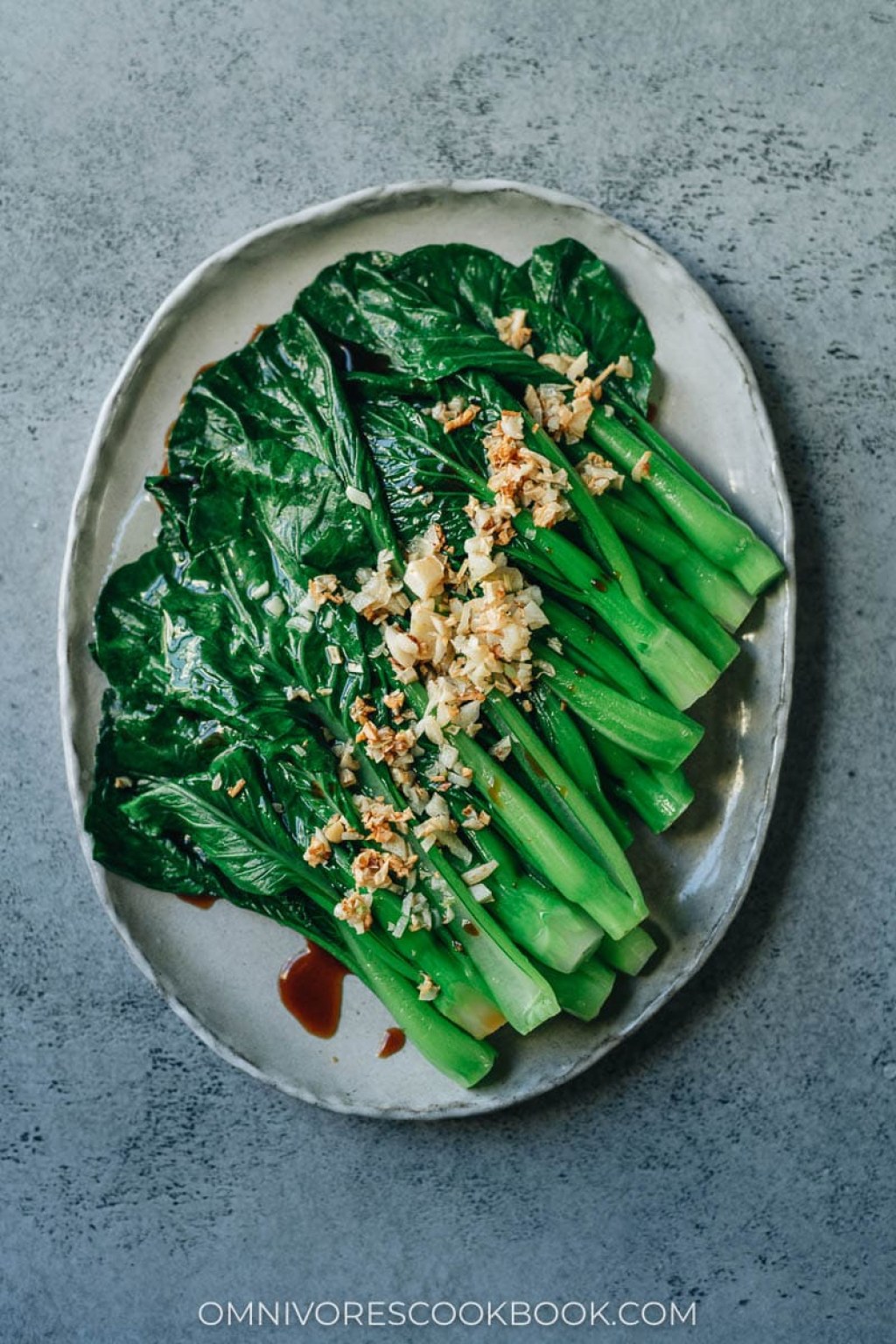Discover The Ultimate Cooking Methods For Leafy Vegetables: Elevate Your Culinary Skills Now!
Cooking Methods for Leafy Vegetables
Introduction
Hello Readers,
2 Picture Gallery: Discover The Ultimate Cooking Methods For Leafy Vegetables: Elevate Your Culinary Skills Now!


Welcome to our article on cooking methods for leafy vegetables. Leafy vegetables are not only delicious but also packed with essential nutrients. However, not all cooking methods are suitable for these delicate greens. In this article, we will explore various cooking methods that can help retain the nutrients and flavors of leafy vegetables. So, let’s dive in and learn how to make the most of these nutritious greens!
Table of Contents

Image Source: squarespace-cdn.com
1. Boiling Leafy Vegetables
2. Steaming Leafy Vegetables
3. Stir-Frying Leafy Vegetables

Image Source: omnivorescookbook.com
4. Sautéing Leafy Vegetables
5. Grilling Leafy Vegetables
6. Roasting Leafy Vegetables
7. Raw Consumption of Leafy Vegetables
1. Boiling Leafy Vegetables
Boiling is a simple yet effective cooking method for leafy vegetables. By boiling the greens, you can soften their texture while preserving their nutrients. Here’s how to do it:
Step 1: Bring a pot of water to a boil.
Step 2: Add the washed and trimmed leafy vegetables to the boiling water.
Step 3: Cook for a few minutes until the greens are tender but still vibrant in color.
Step 4: Drain the cooked greens and season them with salt, pepper, and your favorite seasonings.
Step 5: Serve hot and enjoy!
2. Steaming Leafy Vegetables
Steaming is another excellent cooking method that helps retain the nutritional value of leafy vegetables. Here’s how to steam your greens:
Step 1: Fill a pot with water and bring it to a boil.
Step 2: Place a steamer basket or a colander on top of the pot.
Step 3: Add the washed and trimmed leafy vegetables to the steamer basket.
Step 4: Cover the pot and steam the greens for a few minutes until they are tender.
Step 5: Remove the steamed greens from the pot and season them to your liking.
Step 6: Serve hot and enjoy the nutritious goodness!
3. Stir-Frying Leafy Vegetables
Stir-frying is a quick and delicious way to cook leafy vegetables while retaining their vibrant colors and crunch. Here’s how to stir-fry your greens:
Step 1: Heat some oil in a wok or a large skillet.
Step 2: Add the washed and chopped leafy vegetables to the hot oil.
Step 3: Stir-fry the greens for a few minutes until they are wilted and slightly crispy.
Step 4: Season with soy sauce, garlic, and other desired seasonings.
Step 5: Serve the stir-fried greens as a side dish or as a main course with rice or noodles.
4. Sautéing Leafy Vegetables
Sautéing is a versatile cooking method that works well with leafy vegetables. Here’s how to sauté your greens:
Step 1: Heat some oil or butter in a pan over medium heat.
Step 2: Add the washed and chopped leafy vegetables to the pan.
Step 3: Sauté the greens for a few minutes until they are wilted and tender.
Step 4: Season with salt, pepper, and other desired spices.
Step 5: Serve the sautéed greens as a side dish or incorporate them into other recipes like pasta or omelets.
5. Grilling Leafy Vegetables
Grilling adds a smoky flavor to leafy vegetables and enhances their taste. Here’s how to grill your greens:
Step 1: Preheat the grill to medium-high heat.
Step 2: Brush the washed and trimmed leafy vegetables with olive oil or your favorite marinade.
Step 3: Place the greens on the grill and cook for a few minutes on each side until they are slightly charred.
Step 4: Remove the grilled greens from the heat and season them with salt, pepper, and herbs.
Step 5: Serve the grilled greens as a side dish or as a topping for sandwiches and burgers.
6. Roasting Leafy Vegetables
Roasting leafy vegetables brings out their natural sweetness and adds a delightful crispiness. Here’s how to roast your greens:
Step 1: Preheat the oven to 400°F (200°C).
Step 2: Toss the washed and chopped leafy vegetables with olive oil, salt, and pepper.
Step 3: Spread the greens in a single layer on a baking sheet.
Step 4: Roast the vegetables for about 10-15 minutes until they are crispy and slightly browned.
Step 5: Remove the roasted greens from the oven and serve them as a side dish or use them in salads and sandwiches.
7. Raw Consumption of Leafy Vegetables
Leafy vegetables can also be enjoyed raw in salads, wraps, and smoothies. By consuming them raw, you can maximize their nutritional value and enjoy their natural flavors. Simply wash and chop the greens, and add them to your favorite dishes.
What are Cooking Methods for Leafy Vegetables?
When it comes to cooking leafy vegetables, there are several methods you can choose from. These include boiling, steaming, stir-frying, sautéing, grilling, roasting, and consuming them raw. Each method has its own benefits and can be used to prepare delicious and nutritious meals.
Who can Benefit from Cooking Leafy Vegetables?
Cooking leafy vegetables is beneficial for everyone, from children to adults. These greens are rich in vitamins, minerals, and antioxidants that promote good health and overall well-being. By cooking them using suitable methods, you can make them more appealing and enjoyable for everyone.
When Should You Cook Leafy Vegetables?
Leafy vegetables can be cooked and enjoyed throughout the year. However, certain varieties may be more readily available during specific seasons. It is best to choose fresh and locally sourced greens for optimal taste and nutrition.
Where Can You Find Leafy Vegetables?
Leafy vegetables can be found in various places, including local farmers’ markets, grocery stores, and even your own backyard if you have a vegetable garden. Choose greens that are vibrant in color, free from wilting or yellowing, and have crisp leaves.
Why Should You Cook Leafy Vegetables?
There are several reasons why cooking leafy vegetables is beneficial. Firstly, cooking helps soften their texture, making them easier to chew and digest. Secondly, certain cooking methods can enhance the flavors of these greens, making them more appealing to the palate. Lastly, cooking can help break down the cell walls of leafy vegetables, making their nutrients more bioavailable to the body.
How to Cook Leafy Vegetables Properly?
To cook leafy vegetables properly, it is important to follow the appropriate cooking methods for each type of green. Boiling, steaming, stir-frying, sautéing, grilling, roasting, and consuming them raw are all valid options, depending on personal preference and desired outcomes. Choose the method that best suits your taste and the type of leafy vegetable you are cooking.
Advantages and Disadvantages of Cooking Leafy Vegetables
While cooking leafy vegetables offers numerous benefits, it is important to be aware of the potential drawbacks as well. Let’s take a closer look at the advantages and disadvantages:
Advantages:
1. Increased nutrient availability: Cooking leafy vegetables can enhance the bioavailability of certain nutrients, such as lutein and beta-carotene.
2. Improved taste and texture: Certain cooking methods can bring out the natural flavors and textures of leafy greens, making them more enjoyable to eat.
3. Enhanced digestibility: Cooking breaks down the cell walls of leafy vegetables, making them easier to digest and absorb.
Disadvantages:
1. Nutrient loss: Some cooking methods, such as boiling and long-duration cooking, may lead to a loss of heat-sensitive nutrients like vitamin C.
2. Texture changes: Cooking can cause leafy vegetables to become mushy or wilted, altering their texture.
3. Time-consuming: Certain cooking methods, like roasting and grilling, may require more time and effort compared to consuming leafy vegetables raw.
Frequently Asked Questions (FAQs)
1. Can I cook different types of leafy vegetables together?
Yes, you can cook different types of leafy vegetables together, as long as their cooking times and textures are similar.
2. Can I freeze cooked leafy vegetables?
Yes, you can freeze cooked leafy vegetables for future use. However, keep in mind that their texture may change slightly after thawing.
3. Are there any leafy vegetables that should not be cooked?
While most leafy vegetables can be cooked, some delicate greens, like lettuce, are best enjoyed raw to preserve their crispness.
4. Can I reuse the cooking liquid from boiled leafy vegetables?
Yes, you can reuse the cooking liquid, also known as pot liquor, from boiled leafy vegetables as a flavorful base for soups and stews.
5. How can I reduce the bitterness of certain leafy vegetables?
To reduce the bitterness of leafy vegetables like kale or collard greens, you can blanch them in boiling water for a few minutes before cooking them using your preferred method.
Conclusion
Dear Readers, we have explored various cooking methods for leafy vegetables, including boiling, steaming, stir-frying, sautéing, grilling, roasting, and consuming them raw. Each method offers its own unique benefits and is suitable for different types of leafy greens. Remember to choose fresh and locally sourced vegetables for the best taste and nutrition. So, get creative in the kitchen and enjoy the many flavors and health benefits that leafy vegetables have to offer!
Final Remarks
In conclusion, cooking methods for leafy vegetables play a crucial role in preserving their nutritional value and flavors. Whether you prefer boiling, steaming, stir-frying, sautéing, grilling, roasting, or consuming them raw, it is important to choose the method that suits your taste and the specific type of leafy green you are cooking. Experiment with different recipes and enjoy the incredible health benefits that leafy vegetables provide. Remember to always choose fresh and locally sourced greens for optimal taste and nutrition. Happy cooking!
This post topic: Cooking Techniques


